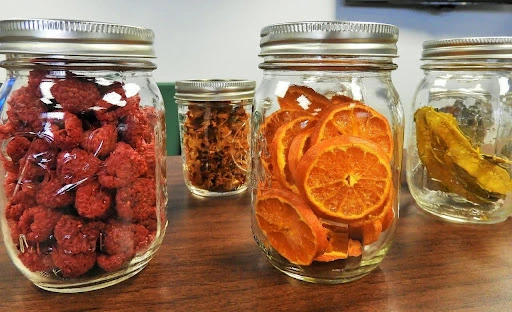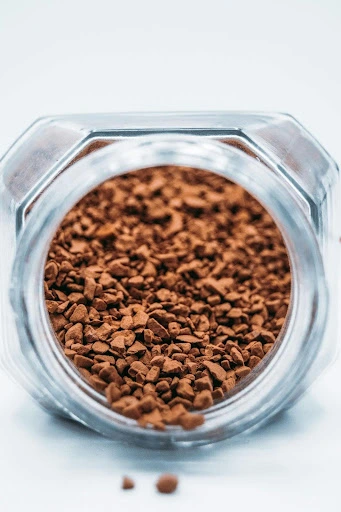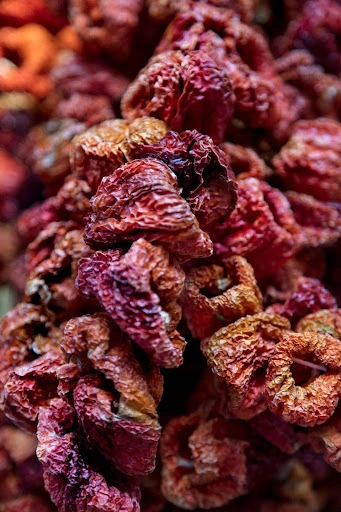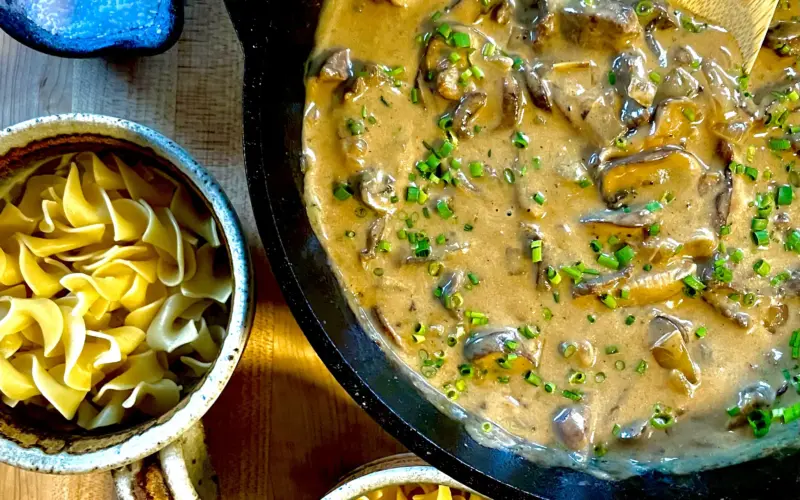When it comes to preserving food, two methods really stand out: dehydration and freeze-drying. They both help food last longer by getting rid of moisture, but they affect the nutritional value, taste, texture, shelf life, and cost of the final product in different ways. This introduction aims to shed light on the fundamental aspects of dehydration and freeze-drying and which one is better for camping or hunting.
Table of Contents
What is Dehydration?
Dehydration is a time-honored process that removes moisture from food to inhibit the growth of microorganisms and decay. At its core, this method uses heat and consistent airflow to achieve dryness, preserving food for extended periods.
One of the benefits of dehydrating food includes a significant loss in food weight and volume, making it more portable and convenient for activities like camping and hunting. It’s also energy-efficient, with a lower cost of equipment to achieve the results. You can even use the sun if you’re feeling extra frugal.
The one big downside is that dehydrating your food can lead to a change in the flavor and texture of food. Some nutrients, especially water-soluble vitamins, can deteriorate during the dehydration process. Despite these drawbacks, the preserved food retains most of its calories and fiber, making it a nutritious option when fresh food is unavailable.
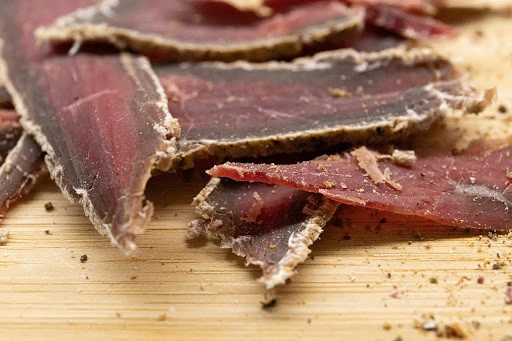
If you’re a camper and hunter, dehydrated foods offer the advantage of lightweight, easy-to-carry nutrition without the risk of spoilage. Beef jerky, dried fruits, vegetables, and granola are popular choices that rehydrate quickly with water.
Some people even dehydrate full meals such as chili, spaghetti, and rice dishes. As long as the ingredients are compatible with dehydration (chicken gets tough, for example) then it should store just fine for your trip.
Foods with high moisture content, like tomatoes and oranges, dehydrate well, while fattier foods can spoil more quickly. Understanding these nuances can optimize food storage for outdoor adventures, ensuring a satisfying meal is always within reach.
What is Freeze Drying?
Freeze drying is a food preservation method that involves freezing the food and then removing the ice through sublimation, turning it directly from solid to gas without passing through a liquid phase.This process occurs under a vacuum, making it possible to extract moisture from food while keeping its structure and nutritional content largely intact.
One of the primary advantages of freeze-drying over traditional dehydrating methods is the preservation of the food’s original flavor, texture, and nutritional value. Studies have shown that freeze-dried foods retain a majority of their vitamins and antioxidants, a crucial factor for maintaining a balanced diet when fresh food is not an option.
Additionally, freeze-dried foods are extremely lightweight and can be stored for many years without refrigeration, making them ideal for camping, hunting, and emergency food supplies.
However, the freeze-drying process requires specialized equipment that is often expensive, making it less accessible for the average consumer. Also, because of this technique preserves the size and structure of the food, freeze-dried products may take up more space than their dehydrated counterparts.
Despite its drawbacks, freeze-drying is an excellent option for preserving high-quality, nutritious foods for outdoor expeditions. Its ability to maintain the original qualities of the food makes it a favorite among adventurers who are willing to invest in their nutrition and enjoyment.
Key Differences Between Dehydrating and Freeze Drying
Dehydrating and freeze drying are both methods used to preserve food by removing moisture, yet they differ significantly in process, outcome, and utility.
- Nutritional content is better preserved in freeze-drying, retaining most vitamins and antioxidants, while dehydration can lead to a more significant loss of these essential nutrients due to the application of heat.
- Taste and texture, freeze-dried foods maintain a closer resemblance to their fresh counterparts, rehydrating more effectively and maintaining their original structure, unlike dehydrated foods which can often become tough or chewy.
- Shelf life is another point of difference; while both methods extend the longevity of food products, freeze-dried foods can usually be stored longer than dehydrated ones without refrigeration.
- Higher Cost: Freeze drying requires higher initial investments for equipment and is generally more expensive than dehydration, making it less accessible for everyday consumers. Ultimately, the choice between dehydrating and freeze-drying will depend on an individual’s priorities regarding nutritional content, taste, texture, shelf life, and cost.
Choosing Between Dehydrated and Freeze-Dried Foods
When planning for camping or hunting trips, choosing between dehydrated and freeze-dried foods hinges on trip duration, nutritional requirements, and storage capacity. For short excursions, dehydrated foods might be more practical due to their lighter weight and smaller volume. They provide ample energy for activities without the need for cumbersome storage solutions.
On the other hand, for extended stays in the wilderness, freeze-dried options offer superior nutrition, taste, and variety, preserving morale and health over time. They rehydrate quicker and more completely, delivering a semblance of home-cooked meals when energy and comfort are sorely needed. The final choice should align with the balance between convenience and the unique demands of your adventure.
Final Thoughts
For most camping trips, I prefer using dehydrated food as I find freeze-drying much too expensive for my tastes. In the winter months, it doesn’t matter but during the summer months I would suggest freeze-dried foods as even in high humidity, dehydrated food can still go bad if not stored properly. The important thing to remember is to do whatever is within your budget, works best with the food you have, and provides the nutrition you need during your outdoor trips.

